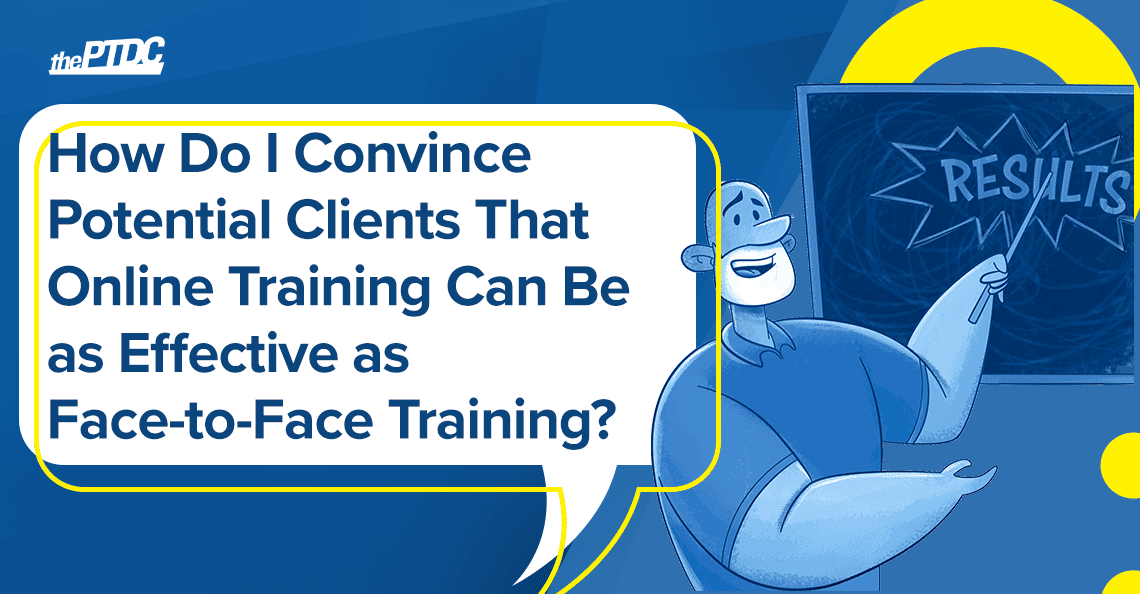
Honestly, I don’t believe you can convince somebody to do online training if they’re already sold on in-person training.
However, I do believe you can make them aware of certain truths they don’t fully appreciate that could make a big difference to them.
The truth of the matter is, online training is way more convenient for most people.
It’s more flexible.
It’s more affordable.
And as their trainer, you’re going to be able to be more responsive to their needs.
So it’s an all-around better service. But most people don’t fully understand that.
How to convince potential clients that online training can be as effective as face-to-face training
Begin by finding out how important flexibility, cost, and trainer responsiveness are to the person you’re talking to.
Ask them about their in-person training experience. If they’re still doing it, say, “I’m curious, tell me why you prefer it.” Or if they’re looking to make a change, ask, “Why did you fall off? What wasn’t working for you?”
Effective selling always begins with curiosity.
Your goal is to try to get at what’s driving them and especially to identify any frustrations they may be experiencing:
Is it the cost? Truth is, in-person training is a pretty expensive process. Some people can afford it and love it, but many can’t.
Is scheduling a nightmare? Another truth: In-person training is pretty inconvenient.
Is location a problem? Some people spend more time getting to and from the gym than they actually spend training there.
Are you satisfied with your past training experiences? If you’ve had a coach before, was the person responsive to your needs?
So get in deep with clients and then, once you identify their frustration, explain how online training solves that.
For example, if scheduling was the issue, say:
“With online training, if you show up at 5:55, that’s cool. If you show up at 6:20, that’s cool. Or, if something comes up and you can’t do your workout until tomorrow, that’s cool too. Unlike at the gym, there’s no pressure to fill a time slot.”
Or, if they’re frustrated with a previous trainer trainer, explain how your online clients actually get more from you than your in-person clients. Say:
“Look, I actually can’t optimize the experience for my clients in the gym because of all the different constraints. A perfect workout is never exactly one hour long. Sometimes my clients need 20- or 30-minute quick hits. Or sometimes they need an hour and 15 minutes to get all of their volume in. But since everything in the gym has to be in these neat little perfect blocks, that’s often not possible.”
Then add:
“My job is to remove stress from your life, not add more. With in-person training, there’s a lot of pressure on you having to show up at a specific time on a specific day. That no longer exists with online training.”
Basically, the key thing you want to get across is this: With online training, clients can get what they need, when they need it, how they need it, and—here’s the real clincher—at a rate that’s actually more affordable than the conventional way.
With this approach, before long, you’ll probably notice the person you’re talking to is nodding their head. They can see that all these things are great benefits.
But understand that’s really all you can do.
You’ve made them more aware of the advantages of online training over in-person training and how hybrid training can work really well and fit their needs, but of course the final decision is up to them.
Learn more: Get answers to more online trainer questions.











